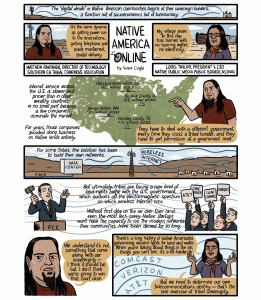The Pacific Standard website has an interesting article on how non-profits help close the digital divide, the gap between those who have access to high-speed internet services, and those who don’t. The author notes:
[T]he digital divide isn’t just about potential adopters. There are also barriers on the supply side that non-profits try to bust through, and most of them are mental. One problem is that businesses aren’t entirely aware of the financial incentives that come with getting more people online.
This is an important reminder, as most of the strategies I’m familiar focus on consumers.

